Île-à-Vache (literally “Cow Island”) is a roughly eight-mile island off the southwest coast of Haiti. Its pirate credentials are solid, having once been a hideout for Captain Morgan (yes, that Captain Morgan), and it’s difficult to get to. It’s home to at least two luxury hotels, plenty of shipwrecks, a few small lodgings, sailboat cruisers, charities and most importantly, lots of brave people with an enterprising spirit who are just looking for a chance after a ton of bad luck.
It was here where I joined the crew of the cruising yacht Tandemeer, who, in partnership with the International Rescue Group (IRG), had already spent a month in Haiti delivering goods and supplies to the people of Île-à-Vache and the surrounding regions in partnership with a number of aid organizations in the area. I’ll detail some of the trip in future posts and articles, but I wanted to get this post out here now and describe the nature of the work we were doing and what the organization has accomplished, as well as my impressions on my first trip to a Third World country.
The four-hour bus ride from Port-au-Prince to the port city of Les Cayes (the jumping off point to Île-à-Vache) takes you over some of the most stunning rolling landscapes in the interior of Haiti. Marinated goat, rice and peas, and pickled vegetables served at a pit stop was some of the best — and cheapest — food I ate in Haiti. Seemingly on every corner along the way were New York lottery ticket stands — evidence of the country’s big dreams, if few of them are ever likely to pan out.
I wasn’t alone for this journey, thankfully. My guide to Île-à-Vache, Fedrique Tarjette, is living proof of what these organizations can do. Now 33, he was burned in an accident as a child and transported for treatment to the United States, where he was raised in various foster homes throughout his teenage years before returning to his family in Haiti, whom he had to had to get to know all over again. He’s basically raised himself, and his competence shows. He now works as a guide on Île-à-Vache and knows every trail (and goat, and place to buy Prestige beer) on the island.
He also speaks flawless English and has the talent to draw out the truth from people (even if they don’t necessarily want to share it). Within an hour of meeting him, I was sharing my deepest hopes, dreams and desires, including my fears about what to expect on the upcoming trip, diving (as I always do) in the unknown headfirst. He asked me: “If you could have anything without worrying about money, what would you want?” Coming from a Haitian, this question seemed to take on a whole new meaning.

When the bus let us off at Les Cayes, Fedrique led me past the sea of enterprising cabbies and we hopped onto the back of a speeding moto-taxi — I’d never gripped harder onto the back of a guy who I’d only met mere moments before. But the primitive motorboats available to take you to the island are even more precarious. We got there late so we were afraid we were out of luck. Thanks to Fedrique, we were able to catch the last boat speeding across the channel. The captain passed out a tarp that we all joined together in holding up to shield ourselves from the spray, along with a handful of other hardy souls (including a new friend with Urkel glasses who passed out caramels to everybody in the boat to welcome us.)
“Is he an old friend of yours?” I asked Freddy after they’d been engaged in conversation in Creole for 15 minutes.
“Nope, we just met,” he said with a laugh.

We arrived in absolute darkness — the island has no electricity and is lit only with occasional solar lights. This is a resort island? I wondered as we groped our way up the hill to Port Morgan. I spent the night at the Port Morgan Hotel, which will also get a separate post. The hotel’s French-born proprietor, Didier Boulard, a spry and wiry man in his 70s, moved to Île-à-Vache decades ago after falling in love with the place. He and his black Lab warmly welcomed me into Room 1, then later to the elegant palapa-roofed patio to enjoy a meal of gigantic prawns by the swimming pool. He told me it was high season at the hotel, but there weren’t too many guests. Given the challenges of transportation, it’s not hard to see why.

Later that night, I met the crew of the boat I’d be sailing on for the next two weeks. Tandemeer is a 57-foot cruiser whose well-weathered captain, Sequoia Sun, has been coming to Haiti since 2010. He’s noticed a lot of changes on the island — from a completely rural backwater to the beginnings of a viable tourist industry, both of which seem to have made an uneasy peace. When he first came, the island had neither electricity nor any motorized transportation to speak of. In the rural areas, people still get around on donkey and horseback. I was later given an ATV tour of the interior of the island, but even these ATVs didn’t exist when he first came.

Madame Bernard’s is the only market on the island, and was unfortunately closed when I was there, but the crew was able to buy products from local farmers, including coconut macaroons that I was lucky enough to sample — the local way, according to crew member Sanne, is to boil them with coffee grounds and lots and lots of sugar. Tandemeer’s first mate Anne Ostlund encountered one of the most wizened old women I’ve ever seen, and gave her jellybeans when she asked for food. “What are these?” she asked in Creole. Apparently jellybeans don’t count as food in Haiti. Do they anywhere?
There is enterprise on the island, including a fish farm and a sailmaking business which was founded with the help of Sequoia Sun’s longtime colleague Bruce Leeming, another cruiser who’s a veteran of Île-à-Vache.

The produce is abundant and rich, but the lack of a functioning economy makes the locals unable to really glean any income from it, unfortunately. During mango season, “everybody sells mangoes to everybody else,” said Sequoia.

Thanks to the Haitian tourist board, I was taken by ATV for a tour of Sister Flora’s orphanage on Île-à-Vache, where Tandemeer distributed medical supplies and sporting goods. There, I was greeted by Sister Flora and three dedicated nuns. The sister was a tiny little person with a big, big heart, who gave me a kiss on the cheek and, through a translator, explained how the corruption of the failed Haitian government has unfortunately screwed over their organization again and again.
Every year politicians arrive, take photo ops and make promises they don’t keep. Sister Flora has been here since the 1970s, dedicating her life to the least, the last and the lost. The Tandemeer was able to deliver badly needed medical supplies for the disabled children who call the orphanage home. The knowledge that there are people out there who eat, sleep and breathe charity was truly humbling, and I was wiping tears from my eyes as we sped away to the next portion of our journey.
The children were all fascinated by technology and eager to have their pictures taken, especially to turn the camera around and see how they turned out! One particularly friendly little girl named Beatrice was a real camera hog. Some of the shyer kids hung back, and having been a shy kid myself, I would have loved to get to know them better, but as it turned out, the orphanage had a “no pictures” policy so I had to shut it down.

Conditions here are stark for such a beautiful place, but the French-Canadian nuns never wavered from their work, especially with the constant attention demanded by the special-needs children. In the U.S. children with special needs are educated in public schools right alongside typical kids, but we forget that for kids in poorer countries, that option isn’t there — and most of the time, their parents can’t afford to care for them, either. So they end up in places like this. I couldn’t stay here long because of the bleakness, with children housed in a single room with two overworked caretakers. It did hearten me that most of the wheelchairs, changing tables and other equipment were in good condition, which means that donations were eventually getting there, no matter how sporadic their arrival.
During my whirlwind Polaris ATV journey, courtesy of the Haitian tourist board that is doing what it can to promote this lovely place, locals paused on the side of the road to watch us with interest. Many children waved eagerly; women stared suspiciously. I could tell they weren’t sure what to make me of me, frantically snapping pictures with my camera phone, but a smile and wave seemed to warm things up, as it does everywhere.
At last, it was time to meet the boat. The Tandemeer’s dinghy, operated by young crewman Cal Dodge, who’d been on the boat since it left New England months ago, picked me up on the beach in front of the hotel, and we sped over the shockingly clear water to the boat anchored in the harbor. There, I met Sanne van der Meusen, an adventurous, effusive and outgoing Dutch backpacker and ship’s cook who would be my cabin mate for the next few weeks. Has there ever been a Dutch seafarer I didn’t like? She’d already been in Haiti for weeks and had been awed by the connection she’d made with the locals, talking about the amazing moment she’d made with a little girl in the orphanage. She was moved and sad that she’d had to leave so soon, though she’d gotten to know the locals intimately. She’d love to come back to Haiti and engage in even more intense charity work.

It’s hard to imagine anyone who wouldn’t enjoy this island — whether for sailing, snorkeling, beaches or cultural tourism. But it’s going to be a challenge. The island is also building an airport to try to attract more tourists, an idea that Sequoia thinks is probably premature. “The locals don’t have clean drinking water,” he said. How does anyone expect to get water for airports, luxury hotels and golf courses?
A few years ago, the government drilled wells to help provide water to residents — which were soon made useless when another large hotel on the island (one I didn’t stay in) actually diverted the water for its own use, illustrating the precarious push-pull between survival and progress in this place.
When people donate money to charity organizations, the organizations can buy supplies they need, but the supplies still need to get there. Due to the limited infrastructure in Haiti (which was further damaged by the 2010 earthquake) that’s not always an easy proposition. We forget that not everywhere has a FedEx and USPS that can deliver anything, anywhere in a limited time. That’s where small cruisers like Tandemeer, working with IRG, can come in and help.
Sanne in particular, given that she was in the country longer than I was, told me she’d grown disillusioned with charity work after learning that funds don’t often go where they’re intended and charity doesn’t always benefit who it’s supposed to.
But this illustrates the importance of IRG’s work — when boats can deliver supplies to these organizations directly, they can bypass a lot of the red tape, corruption and monetary costs that it takes to ship supplies.

Before our departure from Ile a Vache, the crew gave me a briefing on some of the work they had done prior to my arrival and that donations helped fund.
They brought a large cargo of supplies to the city of Deschapelles: books for the new library being built there in French and Creole, musical instruments for the band, tennis rackets, balls and strings for the tennis program. The crew played tennis with them each morning, ping pong at night and attended the grand opening dedication ceremony of the new library being built their thanks to philanthropist Jennifer Grant, who grew up in Haiti and now works with the Albert Schweitzer Hospital, which was founded by her mother Gwen Grant Mellon.
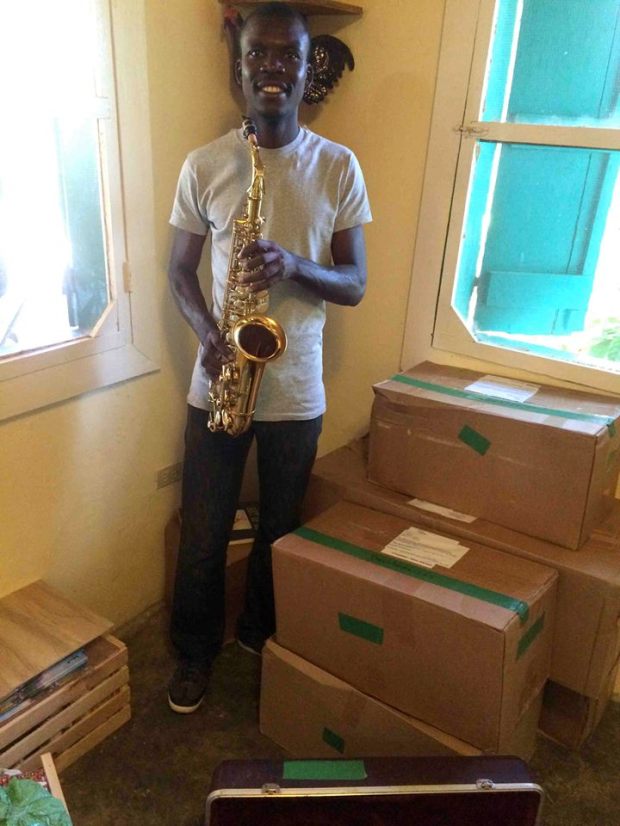

Their second stop in Haiti was the small fishing village of Soulette on Ile a Vache, where they unloaded donated sails for local boats, soccer balls and shoes for the organization run by Pastor Raymond Bideaux and his Islander Evangelic Ministries, then onto Ka Kok (Caille Coq) where they unloaded 22 boxes of medical supplies for the Citi Lumiere hospital there, plus shoes, clothes, soccer balls and jugs of water along with more sails.

In the port city of Les Cayes, where you catch the boat to Ile a Vache, the boat unloaded many large boxes bound for Little Footprints, Big Steps (LFBS) brought from Florida and hand delivered to LFBS Director Morgan Weinberg.
LFBS, as the director explained to me, is not an orphanage but rather an organization dedicated to getting kids off the streets, putting them in school, and reuniting them with their families, if possible. The equipment they are using to give these kids extracurricular activities–the kind we take for granted in the U.S.–will really help enrich these kids in ways we can’t imagine.
On the boat, Sanne introduced me to Samedy Louisson (Haitians have the wildest, most mellifluous names ever), a local woodworker with an infectious smile, whose skills refitting the Tandemeer earned money for his family and possible future employment with other cruisers, thanks to a recommendation letter from Sequoia, safely put in one of my two-gallon plastic bags for safekeeping (glad I could help!) Since we were departing that day, he seemed sad to see us leave. We exchanged email addresses and promised to keep in touch, even though he’d known Sanne for weeks and me for only minutes. When you make a lifelong friend in 10 minutes, that says something about a place, don’t you think?

My last glimpse of Louisson was as he paddled off to shore on his brand-new stand-up paddleboard — which could have been ours to enjoy on the boat if we hadn’t donated it to him. Nuts! But of course, we only wanted it to have fun — he needed it to make a living, and that’s all that matters.
My introduction to the unique island of Île-à-Vache and the people we met there in particular — their friendliness, their openness and bravery — will stay with me for a long time. This is the first trip I’ve ever done that was even remotely like this — I’m an anxious and cautious person, but here, I threw caution to the wind and went for it. The rewards I reaped will stay with me always.
As you all know I partially crowdfunded the volunteer fee for this trip, and these photos and tales illustrate that your help is not in vain. Merci, merci beaucoup à tout!
Also thanks to Sequoia Sun for providing some of the photos for this post.





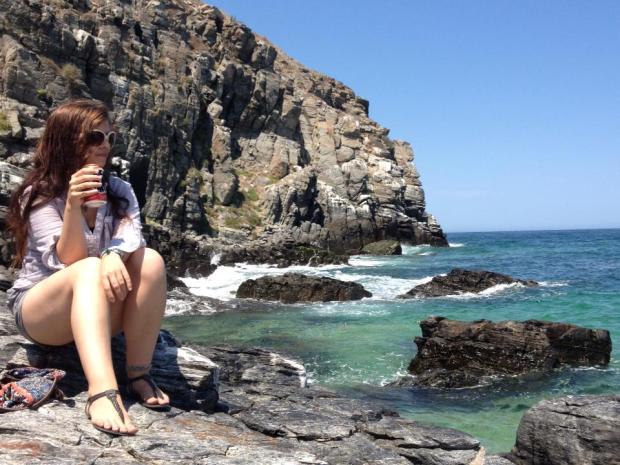

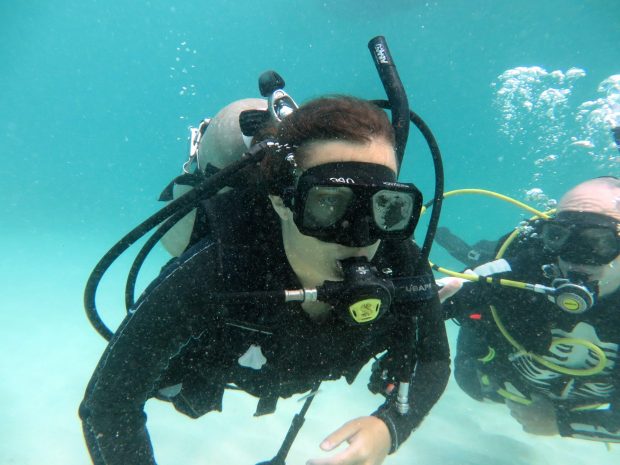

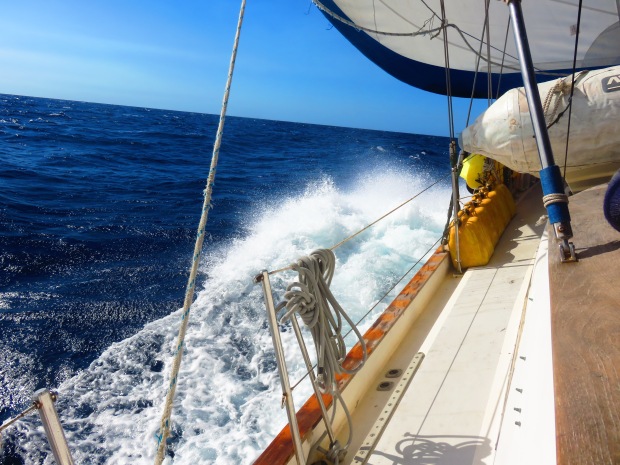

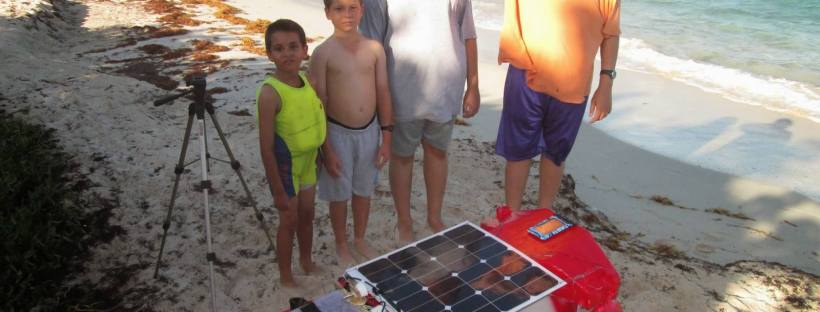



































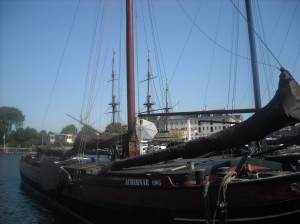


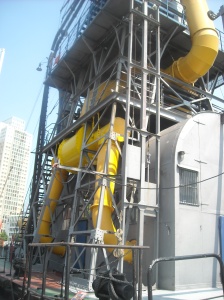





 New Building No. 4, as it’s currently being termed.
New Building No. 4, as it’s currently being termed. Artist’s rendering, apparently.
Artist’s rendering, apparently.